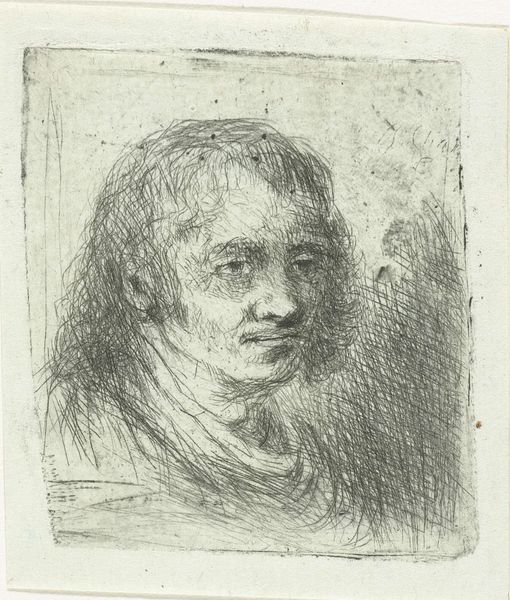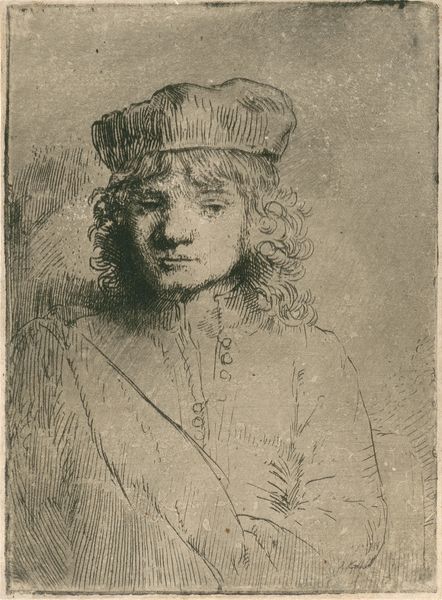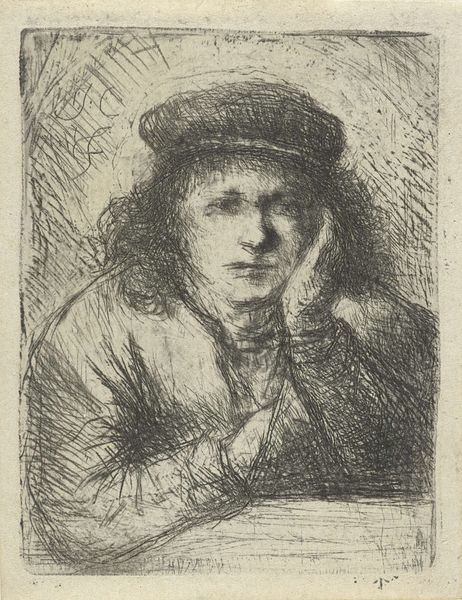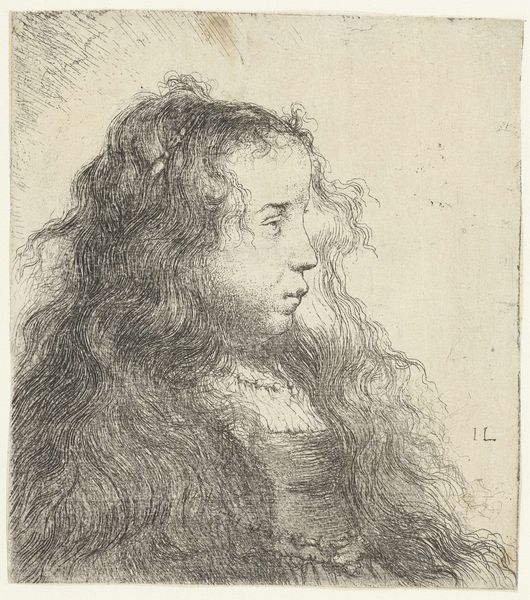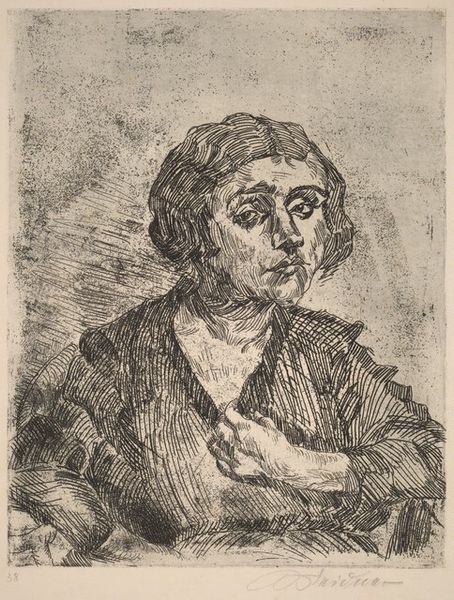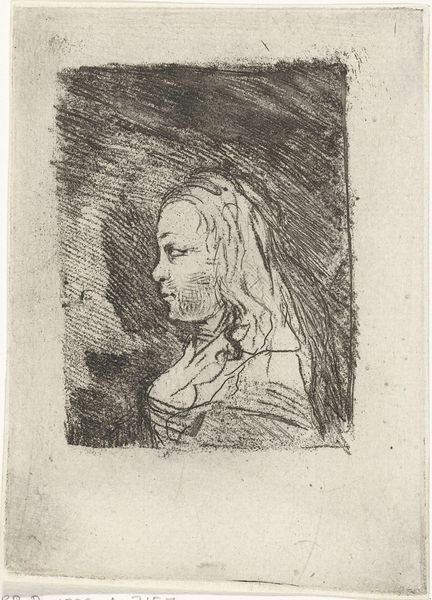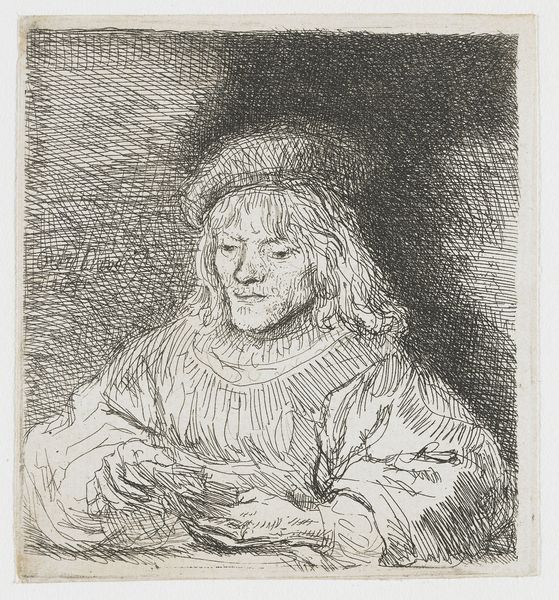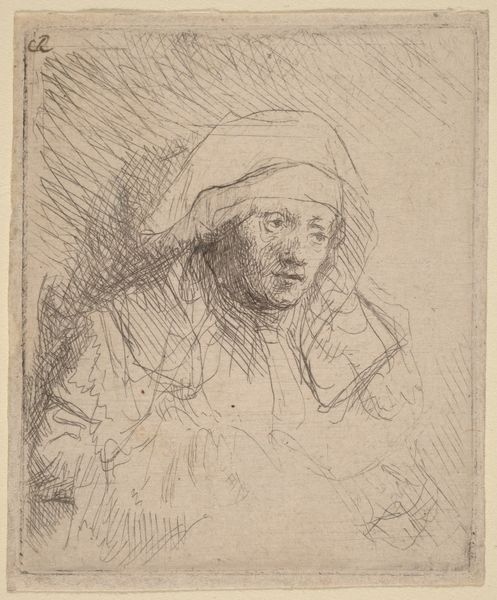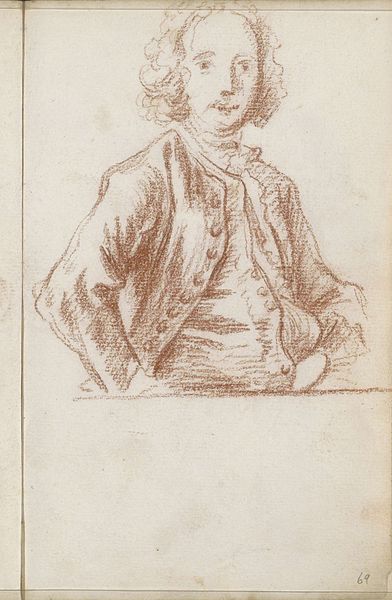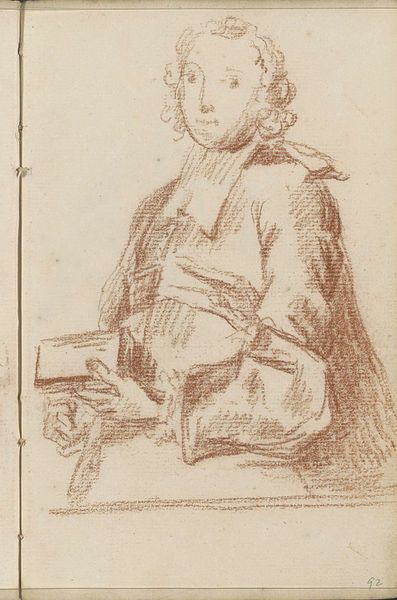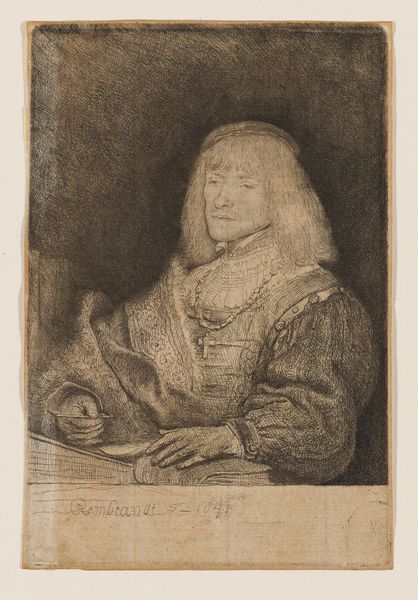
drawing, print, etching
#
portrait
#
drawing
#
baroque
#
dutch-golden-age
# print
#
pen sketch
#
etching
#
figuration
#
men
Dimensions: Sheet (Trimmed): 2 1/2 × 3 15/16 in. (6.4 × 10 cm)
Copyright: Public Domain
This portrait of a young man, now in the Metropolitan Museum of Art, was etched by Rembrandt van Rijn sometime in the 17th century. Etching involves coating a metal plate with a waxy, acid-resistant substance, then scratching an image into the wax. When acid is applied, it bites into the exposed metal, creating lines that hold ink. The plate is then printed onto paper. What's so compelling about etching is that it translates the free-flowing quality of drawing into a repeatable form. You can see that here, in the relatively informal depiction of the sitter, and the rich, almost chaotic layering of the lines, especially in the background. The material qualities of etching also align with the social realities of artistic production during Rembrandt’s time. It made art more accessible, breaking down the traditional hierarchy of painting. Prints could be produced and sold relatively cheaply, which allowed artists to reach a broader audience. So, when we appreciate an etching like this one, we aren't just seeing an image; we're engaging with a whole world of making, commerce, and access.
Comments
No comments
Be the first to comment and join the conversation on the ultimate creative platform.
